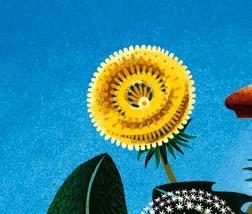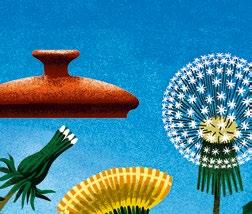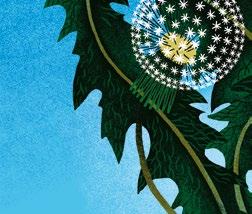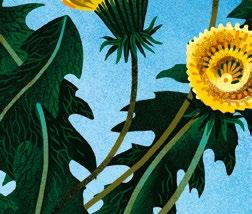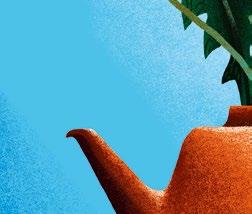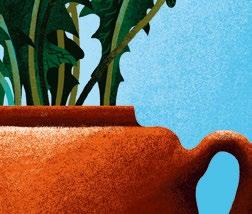
5 minute read
PANE NOSTRUM L’ARTE BIANCA A TRIESTE
—The white art in Trieste
Qualcuno ebbe a sentenziare che, alla lunga, anche l’amore più forte stufa. Il pane no. In tutte le sue innumerevoli forme e gusti è buono sempre! Non rimane deluso chi, a Trieste, cerca un pane tipico; questa città mitteleuropea, dove si incrociano venti e profumi del mondo, di varietà tipiche ne enumera diverse: dalla biga servolana, al pan frizze, alla struza, solo per citare quelli che non mancano mai nelle panetterie triestine. Del resto, spetta proprio al capoluogo regionale il primato dei Tre pani, massimo riconoscimento di bontà assegnato alla panetteria Jerian (via Combi, via Cavana e via Roiano).
Advertisement
Indimenticato il mito delle pancogole , donne che producevano in casa il pane e lo vendevano ai bordi delle strade o al mercato fino a metà degli anni ’50. Si trova proprio in via del Pane Bianco il Museo etnografico di Servola che rende merito a una indimenticata tradizione locale, quella delle “pancogole” (dal latino: panis coculae), le donne che producevano e vendevano autonomamente il pane e che, fino alla metà degli anni ‘50, si potevano ancora trovare sul ciglio delle strade di campagna con dieci chili di pane sulla testa o presso i mercati triestini. Al pianoterra del museo è stata ricostruita la tipica cucina servolana dominata dal forno per la cottura del pane per il quale veniva sempre usata farina bianca che donava alle pagnotte il colore bianchissimo, il profumo e il sapore inconfondibili dati dall’assenza di crusca, tolta passando la farina su un setaccio di seta. Il tipico sapore e l’aroma dipendevano dal legno usato nella cottura ossia il nocino, raccolto sotto forma di fascine nella Ciceria, zona carsica tra Trieste e Fiume. La maestria delle pancogole trasformava l’impasto in s’ciopete, composte da un unico pezzo ripiegato, oppure in parič (biga), formate da due o quattro palline di pasta attaccate a coppie. Biga servolana, pan frizze, struzze , cornetti. Sui banconi delle panetterie di Trieste si possono trovare molti pani tipici specchio della sua multiculturalità. Anche i Cornetti istriani hanno forma e impasto strettamente locale. Un po’ più duro rispetto alle altre tipologie, il pane dei cornetti è entrato a far parte della tradizione dell’arte bianca triestina a partire dagli anni ’50, grazie al contributo dei panificatori istriani che in seguito all’esodo, lasciarono la loro terra per trasferirsi nel capoluogo giuliano. Anche la Rosetta non è così comune in altri luoghi. È un fiore fragrante, eredità dall’impero austroungarico, tanto che originariamente veniva chiamato Pane Kaiser. Molto conosciuto anche il pan de frizze, un pane legato alla stagione invernale arricchito di ciccioli di maiale (frizze in dialetto). Infine, non c’è triestino che non conosca la struza . Qui la derivazione etimologica è lo sloveno štruca, che a sua volta lo ha colto dal dialetto austriaco-bavarese Strutz per indicare un filone dalla forma elittica.
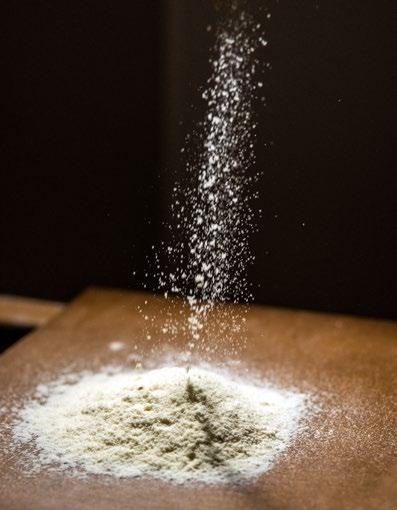
Anche il pane segue le mode. Oggi molti panifici anche a Trieste hanno un occhio attento alla sostenibilità e alla varietà di gusti e farine da grani antichi
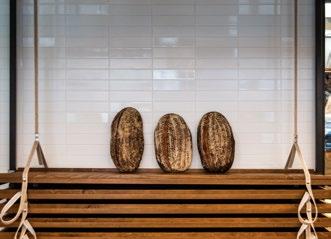
Una nota di merito va senz’altro ai panifici che si prodigano per fare in modo che il pane diventi un prodotto etico, con un’attenzione rigorosa nella scelta delle materie prime, dalle farine al lievito, adatto ad essere conservato per più giorni così da ridurre lo spreco. Uno per tutti, va citato il panificio Pagna, aperto di recente in via Muratti. Qui sforna delizie Pedja Kostic, originario di Belgrado ed estremista della panificazione naturale. Il suo è un pane (ma anche un pain au chocolat, una brioche, una pizza…) che non si dimentica: pagnotte di campagna, bauletti di segale, baguette, pane all’uvetta e noci che travolgono le papille gustative con un’esplosione di genuinità. Buono come il pane.
Someone once remarked that, in the long run, even the strongest love stews. Bread does not. In all its countless forms and flavours, it is always good! Those looking for a typical bread in Trieste will not be disappointed; this central European city, where the winds and scents of the world meet, boasts a number of typical varieties: from the biga servolana to pan frizze and struza, to name but a few that are always found in Trieste bakeries. Moreover, the regional capital holds the record for the Three Loaves, the highest award for goodness assigned to the Jerian bakery (Via Combi, Via Cavana and Via Roiano).
Unforgotten is the legend of the pancogole, women who baked bread at home and sold it by the roadside or at the market until the mid-1950s.
The Servola Ethnographic Museum is located in Via del Pane Bianco (White Bread Street) and pays tribute to an unforgettable local tradition, that of the ‘pancogole’ [from the Latin: panis coculae], the women who made and sold their own bread and who, until the mid1950s, could still be found on the side of country roads with ten kilos of bread on their heads or at Trieste markets. On the ground floor of the museum, the typical Servolan kitchen has been reconstructed, dominated by the oven for baking bread, for which white flour was always used, which gave the loaves their unmistakable white colour, fragrance and flavour due to the absence of bran, which was removed by passing the flour over a silk sieve. The typical flavour and aroma depended on the wood used in baking, i.e. walnut wood, gathered in the form of bundles in Ciceria, a Karst area between Trieste and Rijeka. The skill of the pancogole transformed the dough into s’ciopete, made from a single folded piece, or into parič, a type of bread formed from two or four balls of dough attached in pairs.
Biga servolana, pan frizze, struzze , cornetti. On the counters of Trieste’s bakeries you can find many typical breads that reflect its multiculturalism
Istrian cornetti also have a strictly local shape and dough. Slightly firmer than the other types, the cornetti bread has been part of Trieste’s baking tradition since the 1950s, thanks to the contribution of Istrian bakers who, following the exodus, left their homeland and moved to the Julian capital. Also the Rosetta is quite uncommon in other places. It is a fragrant flower, a legacy from the Austro-Hungarian Empire, so much so that it was originally called Pane Kaiser. Also well known is pan de frizze, a bread associated with the winter season enriched with pork crackling (frizze in dialect). Finally, there is no Triestine who does not know struza. Here the etymological derivation is from the Slovenian word štruca, which in turn borrowed it from the AustrianBavarian dialect Strutz to indicate an elliptical-shaped loaf.
Even bread follows trends. Today, many bakeries also in Trieste have a keen eye for sustainability and a variety of flavours and flours from ancient grains
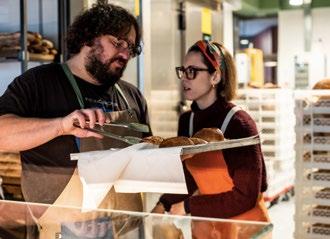
A note of credit is certainly due to the bakeries that do their utmost to ensure that bread becomes an ethical product, with rigorous attention to the choice of raw materials, from flours to yeast, suitable to be kept for several days so as to reduce waste. One for all is the recently opened Pagna bakery on Via Muratti. Here, Pedja Kostic, originally from Belgrade and an extremist in natural bread-making, churns out delicacies. His is a bread (but also a pain au chocolat, a brioche, a pizza...) that you won’t forget: country loaves, rye buns, baguettes, sultana and walnut bread that overwhelm your taste buds with an explosion of authenticity. As good as bread.
Fino alla metà degli anni ‘50 si potevano ancora trovare le pancogole sul ciglio delle strade di campagna con dieci chili di pane sulla testa.
Until the mid-1950s you could still find the ‘pancogole’ on the side of country roads with ten kilos of bread on their heads.
